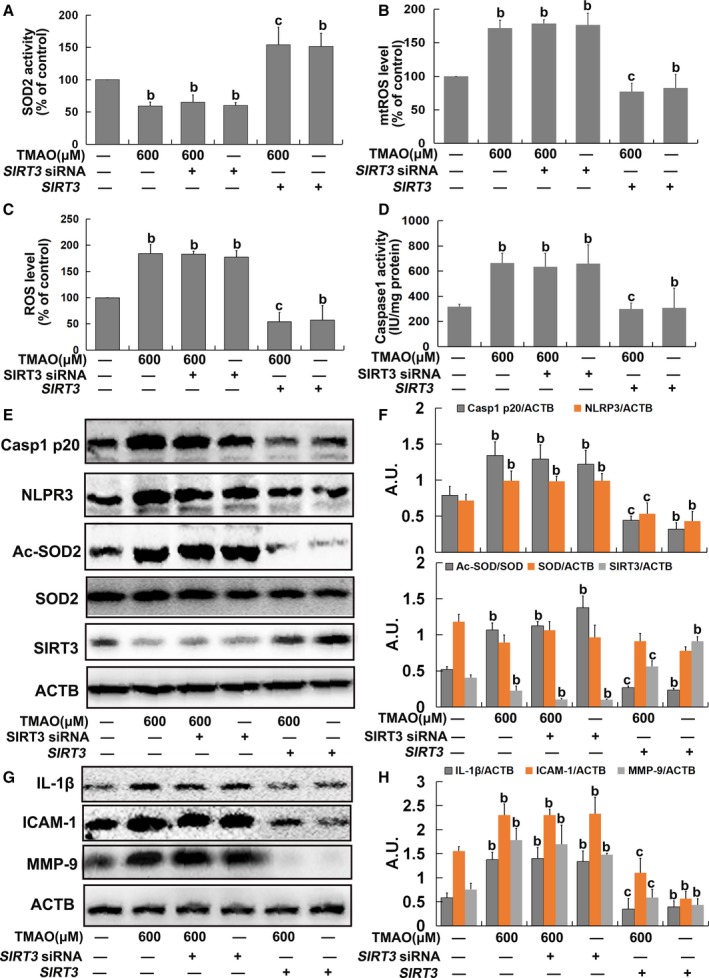Figure 5.

Trimethylamine‐N‐oxide (TMAO) induced mitochondrial reactive oxygen species (mtROS) accumulation via the sirtuin‐3–superoxide dismutase‐2 (SIRT3‐SOD2) pathway in endothelial cells. Human umbilical vein endothelial cells (HUVECs) were transfected with SIRT3 siRNA or a plasmid overexpressing SIRT3 as described in Materials and Methods. After 24 hours, cells were incubated with 600 μmol/L TMAO for 24 hours. A, Assay of SOD2 enzymatic activity using SOD1 and SOD2 Assay Kits with WST‐8 following the manufacturer's instructions. B, Detection of mtROS levels with MitoSOX ™ Red. C, Detection of total ROS levels using DCFH‐DA. D, Measurement of caspase‐1 activity with a caspase‐1 activity assay kit. E, Western blot analysis of caspase‐1 p20, nucleotide‐binding oligomerization domain–like receptor family pyrin domain–containing 3 (NLRP3), Ac‐SOD2, SOD2, and SIRT3 contents. F, Bar graphs showing quantification of the indicated proteins. G, Western blot analysis of IL‐1β, ICAM‐1, and MMP‐9 expression. H, Bar graphs showing quantification of the indicated proteins. Values are expressed as means±SE (n=3); b P<0.01 vs the vehicle‐treated control group; c P<0.01 vs TMAO‐treated group; AU, arbitrary units; ICAM, intercellular adhesion molecule; IL, interleukin; MMP, matrix metallopeptidase.
